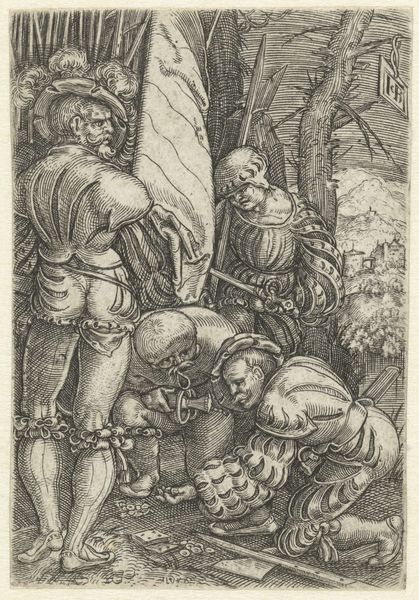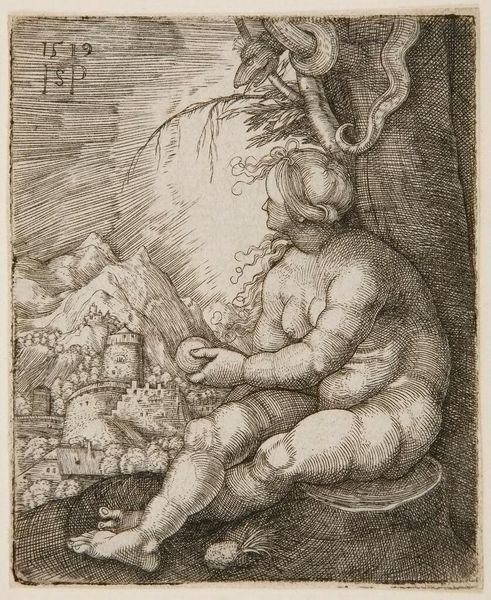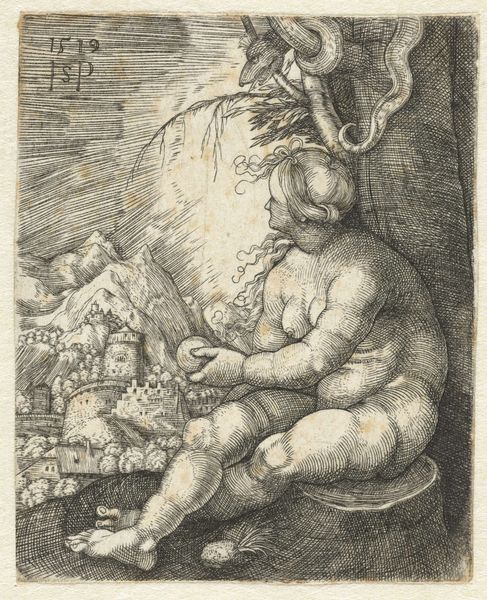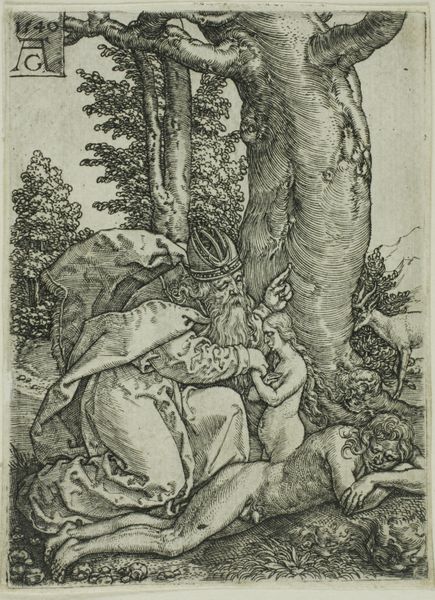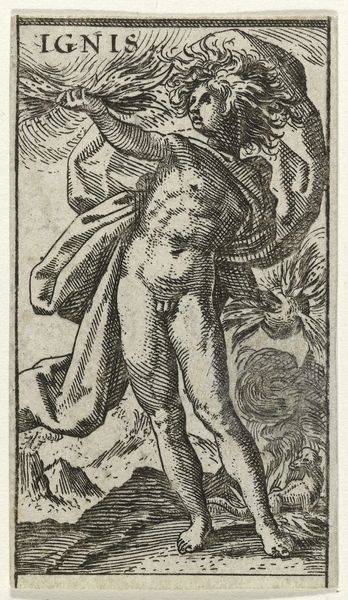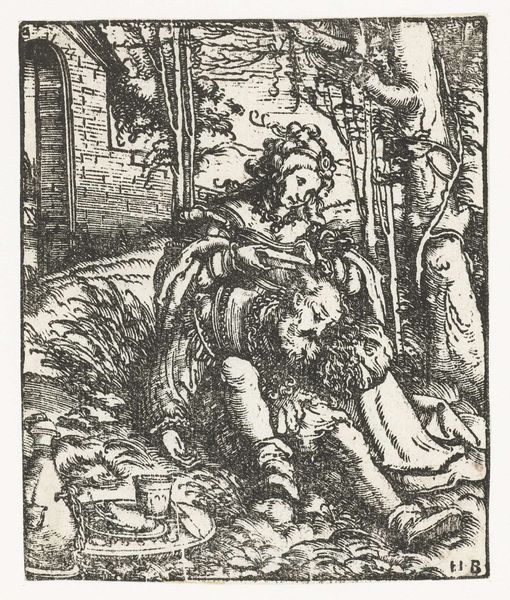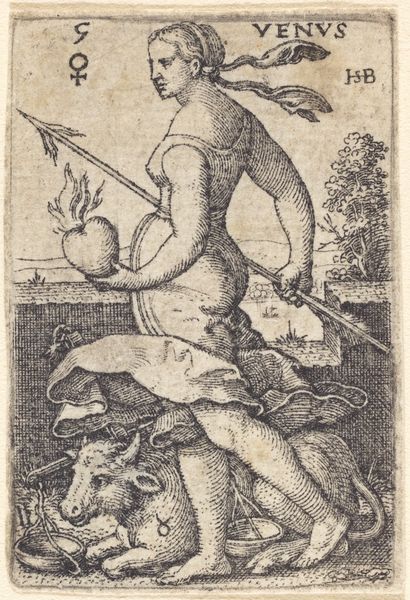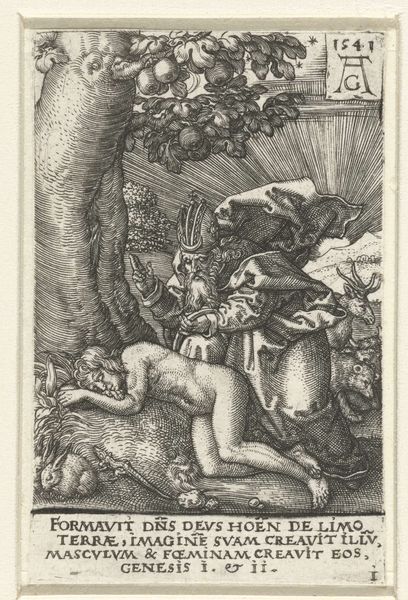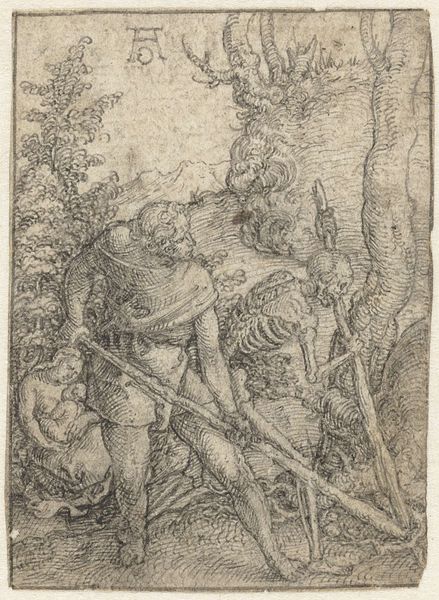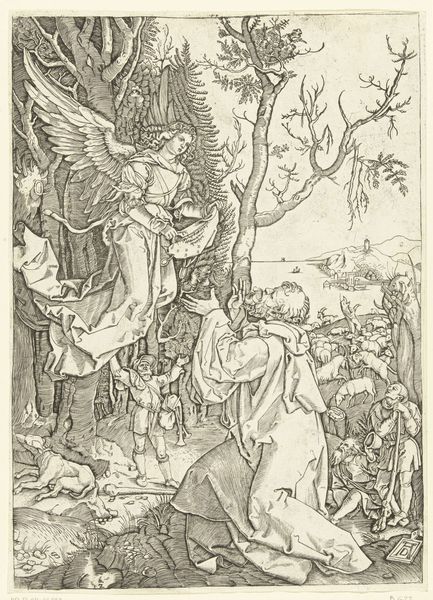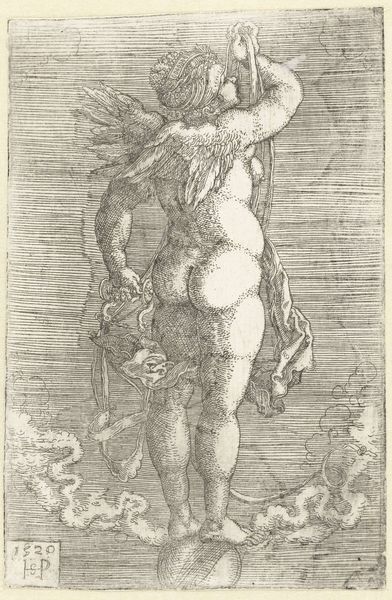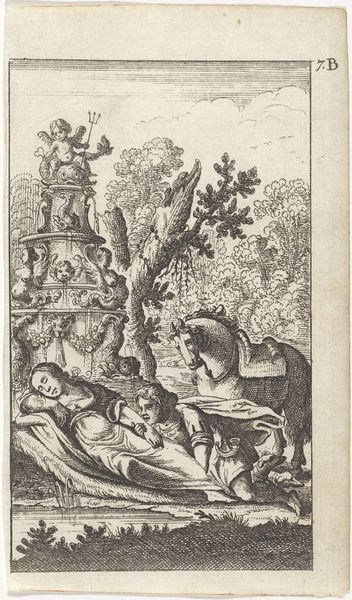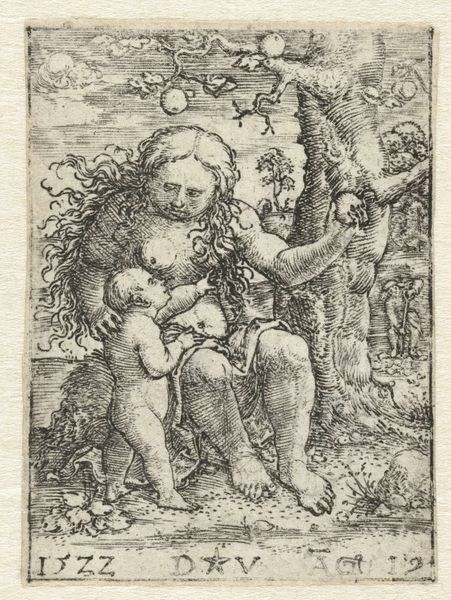
print, engraving
#
narrative-art
# print
#
figuration
#
line
#
history-painting
#
northern-renaissance
#
engraving
Dimensions: height 67 mm, width 48 mm
Copyright: Rijks Museum: Open Domain
Curator: Let’s consider this intricate engraving, "The Creation of Eve," crafted in 1541 by Heinrich Aldegrever, now residing here at the Rijksmuseum. Editor: It feels...claustrophobic, almost. Despite depicting such a monumental moment, the composition is so tightly packed with figures and foliage. What kind of statement could Aldegrever have been making through his production choices here? Curator: Exactly! As a printmaker in the Northern Renaissance, Aldegrever was acutely aware of the social and material implications of reproducible art. This work isn’t simply illustrating scripture; it is about production and reproduction. Look at the detail achieved through engraving – this demands careful consideration of labor and the access which that labor afforded to its widespread proliferation via the printing press. Editor: So you see the act of printing as essential to its meaning? I see its crowded imagery more connected to its cultural moment. Depicting Eve emerging from Adam's side reflects a certain social power dynamic, solidified by religious doctrine. But the presence of all those animals – what do they tell us about man's place in the world? Curator: Precisely! Aldegrever masterfully orchestrates dense line work to mimic textures—the skin, the leaves, even God's garments – calling attention to the labor-intensive craft. Consider the paper, the ink, the engraver’s tools...these weren’t mere givens, they were costly materials, carefully chosen and painstakingly worked upon, affecting the reception of religious imagery among burgeoning audiences. Editor: It highlights how image production intersects with theological and societal structures, framing Eve's creation within patriarchal norms. What implications could these contextual factors hold for its distribution and consumption in the public sphere? Curator: It truly reveals how art functioned not just as a decorative object, but as a complex product embedded within a specific historical moment, entangled in debates around craft, consumption, and access to sacred knowledge. Editor: It’s fascinating to consider these prints not just as representations of a story, but also active participants in the dissemination and reinforcement of specific social ideologies of the era. Thank you for sharing.
Comments
No comments
Be the first to comment and join the conversation on the ultimate creative platform.
